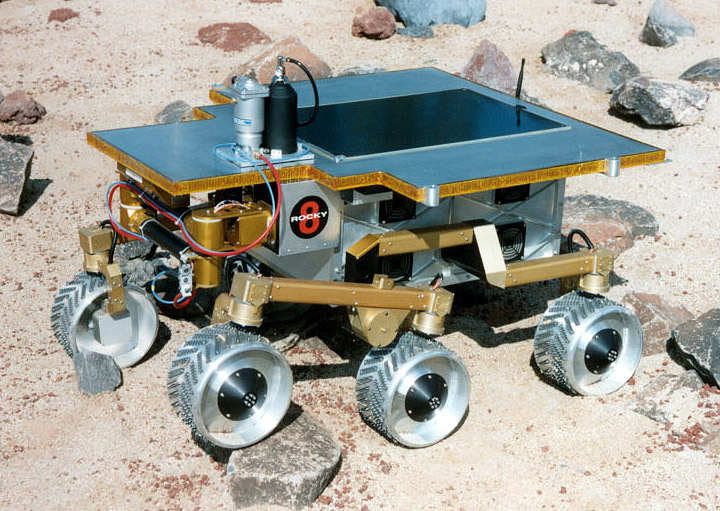- Collaborators
- Dan Helmick, Drs. Yang Cheng, Reg Willson, Larry Matthies
- Summary
Mobile robot position estimation schemes that fuse information from inertial and odometric sensors rely on a number of assumptions regarding the interaction of the wheels with the underlying surfaces (e.g. point contact, coherent ground, etc). Certain aspects of motion such as wheel slippage and/or sinkage are not observable by these estimators and are usually represented as an influx of unmodeled noise disturbances into the system. This in turn deteriorates the performance of a position estimator, reduces the ability of a vehicle to precisely follow a designated path and increases the probability of a catastrophic event such as high centering or sliding along steep slopes. We are currently implementing an array of Kalman filter observers that combine measurements from inertial and odometric sensors with information from a stereo camera tracking 3D features. This bank of filters will be used to detect and measure the effect of wheel slippage and sinkage on the motion of an articulated vehicle. A natural follow up of this effort will be to investigate different control strategies for compensating for these undesired effects.
- Relevant Publications
- C3. D.M. Helmick, S.I. Roumeliotis, Y. Chang, D.S. Clouse, M. Bajracharya, and L. Matthies, "Slip-Compensated Path Following for Planetary Exploration Rovers", Advanced Robotics, (20)11, Nov. 2006, pp. 4782-4795. (pdf)
- C2. D. Helmick, S. Roumeliotis, Y. Cheng, D. Clouse, M. Bajracharya, and L. Matthies, "Slip Compensation for a Mars Rover," In Proc. 2005 IEEE/RSJ International Conference on Intelligent Robots and Systems, Edmonton, Canada, Aug. 2-6, pp. 1419-1426. (pdf)
- C1. D.M. Helmick , Y. Chang, S.I. Roumeliotis, D. Clouse, and L. Matthies, "Path Following using Visual Odometry for a Mars Rover in High-Slip Environments," In Proc. 2004 IEEE Aerospace Conference, Big Sky, MT, Mar. 6-13. ( pdf )
